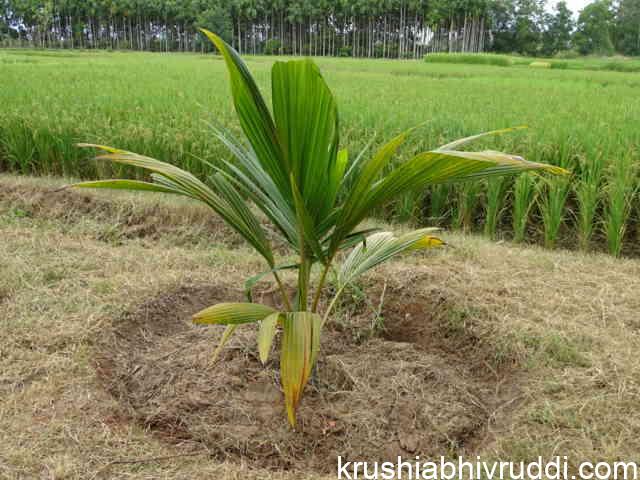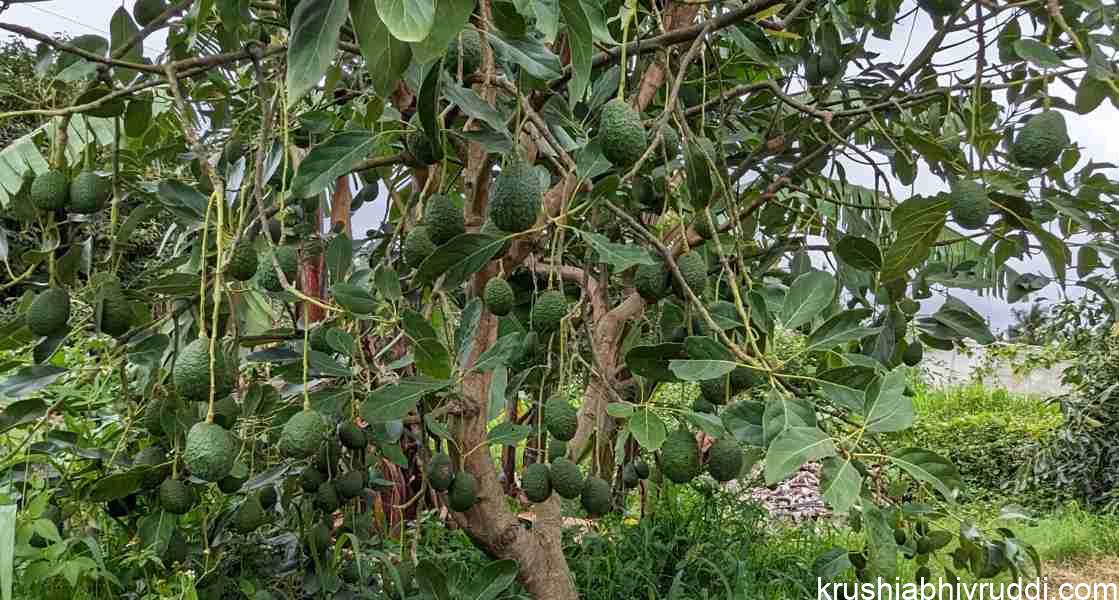Many farmers follow the deep pit method when planting Coconut seedlings. They think if it is at the bottom of the pit, its strength and stress resistance are more. This is not true. Coconut plants are monocot plants that spread its root on the surface soil and they will not go deep into the soil. For early yield and healthy growth of plants, shallow planting is good. How?
Coconut palm has no tap roots but has a thick growth of string–like root system emerging from the blunt bottom of the stem. The tree has a strong root system that anchors its solidity into the soil. Hence it is not usually uprooted during strong winds. A maximum number of roots are penetrated on surface soil which collects nutrients from topsoil. If soil structure is favourable to spread it goes downwards also. Loose soil encourages root growth. If there was loose and fertile soil available on the surface it will grow up to 5 meters also. Understanding this theory, we have to plan the planting system.
Shallow planting is good:
Take an example of Coconut growing areas of Tamilnadu, Andrapradesh, and some parts of Karnataka like Arasikere, Tiptur, Mandya, Mysore, and Chitradurga, they plant the seedlings on the surface of the soil. They dig soil only for loosening the plant placement area. There was a saying that Dig the pit as you wish, but plant at the upper side. Here they can get good growth in the initial stages. Their average yield of the plant is more than 100 nuts per year. They supply tender coconuts the whole year in good size. There we find a bole at the bottom of the tree. Bole in coconut tree is like a storage space for camels in deserts.

What is the advantage of shallow planting?
When we plant seedlings at the upper surface of the pit, the plant will get sufficient soil media to grow roots. Roots will grow downward up to the loose soil available. Also, there was no disturbance to root spreading. If there was hard soil the root will not push to grow forward. It will circulate at the same place. In this situation, the nutrient uptake will be less.
In some areas like coastal Karnataka, farmers follow the deep pit method. Also, they put the raw waste inside the pit. Put some soil on the waste and plant the seedlings. In this system, the plant will suffer the initial stages of growth. After planting the new roots will start to grow. When it grows deeper where it will not get soil media. So root penetration will be disturbed. If any wind came the plant will bend against it. All monocot plants need favourable conditions in the initial years. If we nourish it well in the initial years it will start flowering in the scheduled period. Otherwise, its yielding potential will be hindered.

In water logging land:
On sea shore, on the riverside, or in a band of paddy fields, Farmers plant coconut seedlings in the heap method. Here we can find good growth in the initial stage and it will yield well in its lifetime. It need not requires much care also. Its roots spread nearby water and get the required water and nutrients. In the Coastal belt, farmers make a heap of sand and plant the seedlings. It will grow well.
Roots require sufficient respiration:
In the rainy season, we can find more roots on the upper surface of the soil. The reason is the soil is very loose and at that time roots need more oxygen. The roots of coconut plants need oxygen for their respiration. In search of oxygen, it will spread the upper portion of the soil. The Drainage of excess water is very important. Water logging will affect the root system and plant health.
Plant the Coconut seedling in the upper portion of the pit and get a good yield and good health for our beloved tree.











